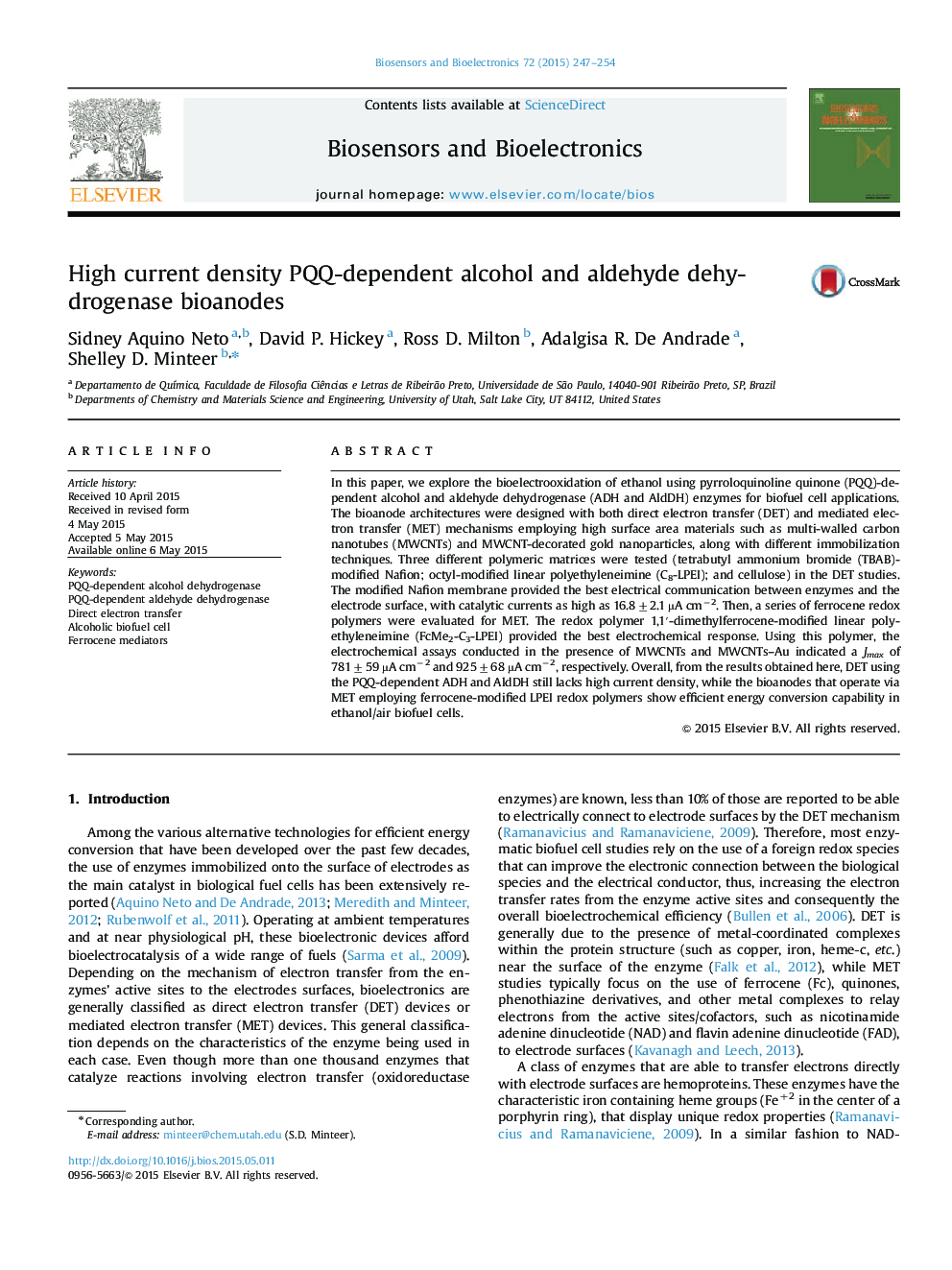| کد مقاله | کد نشریه | سال انتشار | مقاله انگلیسی | نسخه تمام متن |
|---|---|---|---|---|
| 866320 | 1470959 | 2015 | 8 صفحه PDF | دانلود رایگان |

• Direct and mediated electron transfer using PQQ-ADH and AldDH were investigated.
• TBAB-modified Nafion bioanode provided the best electrochemical response.
• Bioanodes containing MWCNTs or Au nanoparticles showed enhanced performance.
• High currents were obtained with ferrocene-modified LPEI redox polymer bioanodes.
In this paper, we explore the bioelectrooxidation of ethanol using pyrroloquinoline quinone (PQQ)-dependent alcohol and aldehyde dehydrogenase (ADH and AldDH) enzymes for biofuel cell applications. The bioanode architectures were designed with both direct electron transfer (DET) and mediated electron transfer (MET) mechanisms employing high surface area materials such as multi-walled carbon nanotubes (MWCNTs) and MWCNT-decorated gold nanoparticles, along with different immobilization techniques. Three different polymeric matrices were tested (tetrabutyl ammonium bromide (TBAB)-modified Nafion; octyl-modified linear polyethyleneimine (C8-LPEI); and cellulose) in the DET studies. The modified Nafion membrane provided the best electrical communication between enzymes and the electrode surface, with catalytic currents as high as 16.8±2.1 µA cm−2. Then, a series of ferrocene redox polymers were evaluated for MET. The redox polymer 1,1′-dimethylferrocene-modified linear polyethyleneimine (FcMe2-C3-LPEI) provided the best electrochemical response. Using this polymer, the electrochemical assays conducted in the presence of MWCNTs and MWCNTs–Au indicated a Jmax of 781±59 µA cm−2 and 925±68 µA cm−2, respectively. Overall, from the results obtained here, DET using the PQQ-dependent ADH and AldDH still lacks high current density, while the bioanodes that operate via MET employing ferrocene-modified LPEI redox polymers show efficient energy conversion capability in ethanol/air biofuel cells.
Figure optionsDownload as PowerPoint slide
Journal: Biosensors and Bioelectronics - Volume 72, 15 October 2015, Pages 247–254